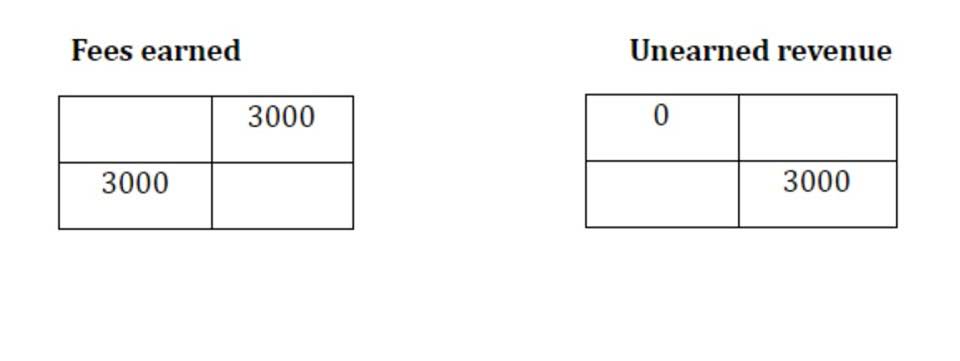Bookkeeping
What Financial Statement Lists Retained Earnings?

The main difference between retained earnings and profits is that retained earnings subtract dividend payments from a company’s profit, whereas profits do not. Where profits may indicate that a company has positive net income, retained earnings may show that a company has a net loss depending on the amount of dividends it paid out to shareholders. So, if you’re looking at a balance sheet and you see a credit balance in the Retained Earnings account, it means the company has accumulated earnings over its lifetime.

Retained Earnings in Business Structures
Each type of entity—sole proprietorships, partnerships, and corporations—has distinct characteristics that influence how retained earnings are calculated, reported, and utilized. Understanding these differences is crucial for stakeholders to assess the financial strategies and performance of businesses within various structural frameworks. Explore the role of retained earnings in financial analysis, from trial balance scrutiny to their impact on various business structures and M&A activities.
Cash Dividend Example
The accumulated retained earnings of a company can be an attractive asset, representing a reservoir of capital that can be used to finance acquisitions or to bolster the combined company’s balance sheet post-merger. During due diligence, the retained earnings figure is scrutinized to assess the historical profitability and to gauge the sustainability of the company’s growth. Prior period adjustment is made when there is an error in prior period financial statements or the company changes the accounting standard or policy that requires the retrospective adjustment. In accounting, the company usually makes the journal entry for retained earnings when it makes the closing entry after transferring net income or net loss to the income summary account. However, the company may also make the journal entry that includes the retained earnings account when it needs to make the prior period adjustment.
- Samsung Inc. earned a net profit of 500,000 during the accounting period Jan-Dec 20×1.
- The retention ratio helps investors determine how much money a company is keeping to reinvest in the company’s operation.
- To conduct a thorough analysis, one must consider factors that contribute to the variance.
- Retained Earnings are a part of “Shareholders Equity” presented on the “Liabilities side” of the balance sheet as it indicates the company’s liability to the owners or shareholders.
- Companies can strengthen their financial stability and support long-term growth by keeping some profits within the business.
Net income vs. gross profit
Net income increases the balance in the Retained Earnings account, so we would credit the Retained Earnings account by $20,000. Retained Earnings (liability) are Credited (Cr.) when increased & Debited (Dr.) when decreased. Below is the balance sheet for Bank of America Corporation (BAC) for the fiscal year ending in 2020.
How are retained earnings different from dividends?

In some industries, revenue is called gross sales because the gross figure is calculated before any deductions. According to this rule, an increase in retained earnings is credited and a decrease in retained earnings is debited. As a result, any factors that affect net income, causing an increase or a decrease, will also ultimately affect RE. As with many financial performance measurements, retained earnings calculations must be taken into context.

Retained earnings are calculated by subtracting dividends from the sum total of the retained earnings balance at the beginning of an accounting period and the net profit or loss from that accounting period. A company’s retained earnings balance can be found on the shareholder’s equity section of the balance sheet (one of the 3 core financial statements), which can be found in the company’s annual report or website. Unlike net income, which can be influenced by various factors and may fluctuate significantly between periods, retained earnings offer a more consistent and reliable indicator of the business’s financial health. A strong retained earnings figure suggests that a company is generating profits and reinvesting them back into the business, which can lead to increased growth and profitability in the future. When a company generates net income, it is typically recorded as a credit to the retained earnings account, increasing the balance. In contrast, when a company suffers a net loss or pays dividends, the retained earnings account is debited, reducing the balance.
Normal Balance of Accounts
While retained earnings help improve the financial health of a company, dividends help attract investors and keep stock prices high. You’ll find retained earnings listed as a line item on a company’s balance sheet under the shareholders’ equity section. It’s sometimes called accumulated earnings, earnings surplus, or unappropriated profit. So, the amount of income summary in the journal entry above is the net income or the net loss of the company for the period. Hence, the retained earnings account will increase (credit) or decrease (debit) by the amount of net income or net loss after the journal entry.
Retained earnings are a type of equity and are therefore reported in the shareholders’ equity section of the balance sheet. Although retained earnings are not themselves an asset, they can be used what is the normal balance of retained earnings to purchase assets such as inventory, equipment, or other investments. Therefore, a company with a large retained earnings balance may be well-positioned to purchase new assets in the future or offer increased dividend payments to its shareholders. Cash payment of dividends leads to cash outflow and is recorded in the books and accounts as net reductions.
What Is the Difference Between Retained Earnings and Dividends?

Scenario 2 – Let’s assume that Bright Ideas Co. begins a new accounting period with $250,000 in retained earnings. When the accounting period is finalized, the directors’ board opts to pay out $15,000 in dividends to its shareholders. The level of retained earnings recording transactions can guide businesses in making important investment decisions.
